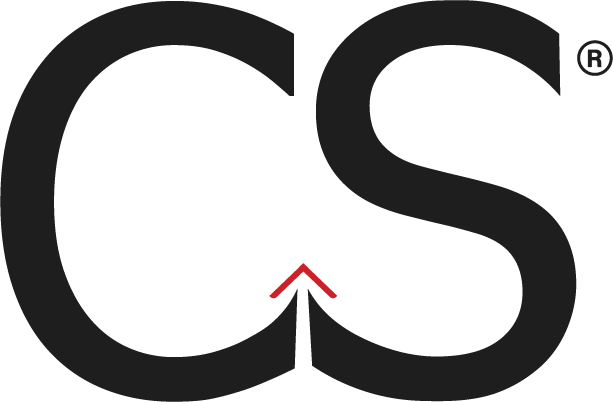A due from account records money owed to a business (assets), while a due to account indicates money owed by a business to an entity (liabilities). The former focuses on incoming funds, while the latter deals with outgoing obligations. When a customer makes a payment in a foreign currency, the funds are initially credited to the nostro account at the bank where the customer made the transaction. This process ensures that the institutional investor can easily access these funds when needed. Nostro accounts help maintain a clear separation of funds and income, which is essential for efficient accounting processes and simplifying audits.
The Importance of Emergency Funds and How to Build Yours
Learn the definition, working mechanism, and key differences between due from account and due to account in finance. Upgrading to a paid membership gives you access to our extensive collection of plug-and-play Templates designed to power your performance—as well as CFI’s full course catalog and accredited Certification Programs.
Example 1: Due to/Due from Entry Between Two Departments
They help in keeping track of cash flows across multiple entities while ensuring that transactions are correctly recorded. In addition, due from accounts provide valuable information during audits as they maintain a clear paper trail, making it easier for auditors to review financial records and assess the company’s financial position. A due from account, also known as an asset account, plays a significant role in finance and investment by tracking money owed to a company that is currently being held at another firm. A due from account represents incoming assets or receivables and can be considered the counterpart of a payable account. In summary, the use of a due from account is an essential tool for institutional investors seeking to maintain a clear record of incoming assets, simplify accounting processes, and optimize tax management. By understanding the advantages and utilization of this crucial account, organizations can make informed decisions about their financial strategies and effectively manage their investments.
- This involves verifying that the amounts, dates, and descriptions align perfectly.
- If you’ve ever wondered what a due from account is, how it works, and how it differs from a due to account, you’re in the right place.
- If it does, it may indicate incorrect data entry or an error in the accounting system.
- It represents funds that have been transferred or advanced to the debtor and are expected to be repaid in the future.
Imagine you run a business, and one of your clients, ABC Inc., has purchased $10,000 worth of products on credit. To keep track of this transaction, you create a due from account specifically for ABC Inc. Just like due from account is in conjunction with the due to account, nostro account is in conjunction with the “vostro” account, which is the “due-to” counterpart for the nostro account. It may or may not be separately listed on the balance sheet, depending on its significance. Whenever ABC Inc. makes a payment towards the outstanding amount, your due from account decreases.
Example 2: Intercompany Loan Between Parent and Subsidiary
For instance, offering early payment discounts or setting up automated payment reminders can incentivize customers to pay promptly. Additionally, regular review and analysis of aging reports can help identify overdue accounts and prioritize collection efforts, thereby minimizing the risk of bad debts and improving overall cash flow. Another important feature is the necessity for regular monitoring and reconciliation.
The funds in a due to account are frequently designated for a specific purpose, for example, to satisfy a debt obligation, prior to being transferred into the account. Reconciliation processes for Due From Accounts are fundamental to maintaining the integrity of financial records. These processes involve comparing the balances recorded in the company’s books with external statements or records to ensure consistency and accuracy. Regular reconciliation helps in identifying discrepancies early, allowing for timely corrections and preventing potential financial misstatements. Another critical aspect of accounting for Due From Accounts is the assessment of collectability.
- The due from account provides a clear picture of the inflows of the business by separating the incomings from the outgoings of the business.
- Due From Accounts are a crucial component of an institution’s financial structure, serving to record assets owed to it.
- This separation allows for better organization and tracking of funds, making it easier to identify sources and destinations of transactions, simplifying the paper trail for audits and other research purposes.
- By leveraging such technology, organizations can improve efficiency and accuracy in their reconciliation processes.
Accounting Treatment for Due From Accounts
During the consolidation of financial statements, intercompany transactions must be eliminated to avoid double counting. This process involves reversing the original entries made in the due to and from accounts, ensuring that the consolidated statements reflect only external transactions. When one entity sells goods or services to another within the same corporate structure, the transaction is recorded in due to and from accounts. This practice not only helps in tracking internal revenue and expenses but also aids in consolidating financial statements at the group level. It ensures that all internal transactions are accounted for, providing a clear picture of the financial health of the entire organization.
If it does, it may indicate incorrect data entry or an error in the accounting system. Similar to an accounts receivable account, the due from account records the receivables or incoming assets of the business currently being held at related companies. These examples show how “Due to” and “Due from” accounts are used to track intercompany or intra-entity transactions, ensuring accurate recording and reconciliation of amounts owed between related parties. In international business, a due from account can be alluded to as a nostro account.
Learn About Finance:
While “Due to Account” reflects amounts payable, a “Due from Account” indicates receivables, or amounts owed to the entity by others. The two are often used in tandem due to/from account to track both sides of intercompany or third-party transactions. The due to accounts are recorded as credit accounts and show the business the amount payable to another source. The reconciliation of all the accounts is the primary purpose of maintaining a general ledger within the accounting statement. Due to account is the money an organization owes to others, whereas due from account is the money the organization is owed.
Where Can I Get A Money Order With Credit Card
If this occurs, it reveals there was an error was made in the accounting process. Whether you are an individual or a business, tracking and managing these receivables is crucial for maintaining a healthy cash flow and assessing your financial position. Due From Accounts play a significant role in cash flow management, serving as a bridge between revenue recognition and actual cash inflows. Effective management of these accounts ensures that a business can maintain liquidity and meet its short-term financial obligations. By closely monitoring Due From Accounts, financial managers can forecast cash inflows more accurately, allowing for better planning and allocation of resources.
Reconciliation Processes
In this section, we will delve into the comparison between these two essential components of a general ledger. “Due to” and “Due from” accounts are used in accounting to track amounts that are owed between entities, often within the same company or between related companies. These entries typically arise in intercompany transactions, where one entity owes money to another, or when funds are transferred between different parts of an organization. Reconciliation of all accounts is the purpose of keeping an accurate, up-to-date general ledger within the accounting statement. Making this a less labor intensive process, the use of two columns helps to keep track of all credit and debit accounts, using one centralized source.
This separation allows for better organization and tracking of funds, making it easier to identify sources and destinations of transactions, simplifying the paper trail for audits and other research purposes. Finance teams must regularly monitor and reconcile due to and due from balances to ensure they align. Discrepancies can arise from various factors, such as timing differences or recording errors, and must be promptly addressed to maintain financial integrity. For example, if a subsidiary records a payment to the parent company but the parent company has not yet recorded the receipt, this mismatch needs to be reconciled to ensure both entities’ books are accurate. This ongoing vigilance is crucial for maintaining the overall financial health of the organization.


